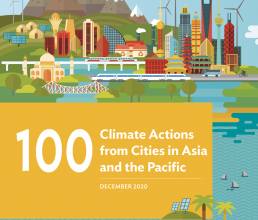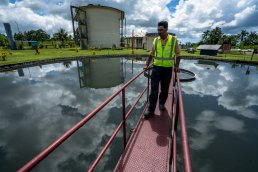First appeared in

Asian Development Bank
100 Climate Actions from Cities in Asia and the Pacific
The capital city of the small island nation of Fiji is improving the delivery of freshwater and the processing of used water, while also acting on implications of climate change.
The capital city of the small island nation of Fiji is improving the delivery of freshwater and the processing of used water, while also acting on implications of climate change.
The islands of Fiji are on the frontline of climate change and expect to see rising sea levels over the coming decades unless strong mitigation measures are implemented internationally and quickly. An investment program will seek to provide clean drinking water for the inhabitants of Suva and improve the management of wastewater in the city.
A newly planned supply intake on the Rewa river will expand freshwater capacity and include a treatment plant, pumping station, reservoir, and transmission main to connect to the existing system. As a climate adaptation response to predicted sea level rise and increased risk of saltwater intrusion, the intake has been moved 20 kilometers further upstream. A catchment management plan will be developed to safeguard the water source and ensure long term sustainability.
95%
OF RESIDENTS IN THE GREATER HONIARA AREA SERVED BY PIPED WATER SUPPLY BY 2047
OF RESIDENTS IN THE GREATER HONIARA AREA SERVED BY PIPED WATER SUPPLY BY 2047
Suva’s wastewater network will also be rehabilitated and expanded by upgrading 31 existing wastewater pumping stations, upgrading existing infrastructure, and expanding the network to service an additional 15% of households.
The $405 million investment program is funded in part by an ADB loan.

Suva is investing in improved drinking water and wastewater processing facilities under stark climate change scenarios (photo by ADB).
The Challenge
Rising tides and increasing droughts will increase pressure on Suva’s water supply, which has not kept pace with recent levels of migration to the city.
Co-Benefits
Health Improvements to water and sewage pipelines will limit water contamination and groundwater seepage, as well as health risks from waterborne diseases.
Economic Reduced water losses and increased supply capacity will lower costs for users and help accommodate population growth in the area.
Environment Water savings, sewer systems, and the capture of methane from an anaerobic digester will reduce emissions by 26,000 tons of CO₂ equivalent per year.

